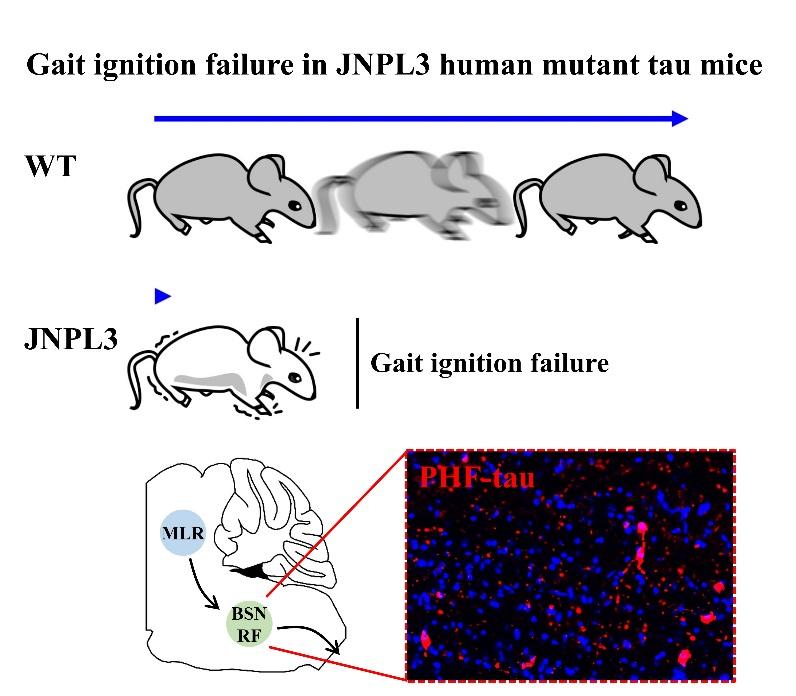Articles
Article Tools
Stats or Metrics
Article
Original Article
Exp Neurobiol 2019; 28(3): 404-413
Published online June 26, 2019
https://doi.org/10.5607/en.2019.28.3.404
© The Korean Society for Brain and Neural Sciences
Gait Ignition Failure in JNPL3 Human Tau-mutant Mice
HoChung Jang1, Jung Hwa Ryu1, Kyung Min Shin1, Na-young Seo1,2, Gyu Hyun Kim1, Yang Hoon Huh3, Ae Nim Pae4, and Kea Joo Lee1,2*
1Department of Structure and Function of Neural Network, Korea Brain Research Institute, Daegu 41062, Korea.
2Department of Brain and Cognitive Sciences, DGIST, Daegu 42988, Korea.
3Center for Electron Microscopy Research, Korea Basic Science Institute, Cheongju 28119, Korea.
4Convergence Research Center for Diagnosis, Treatment and Care System of Dementia, Korea Institute of Science and Technology, Seoul 02792, Korea.
Correspondence to: *To whom correspondence should be addressed.
TEL: 82-53-980-0320, FAX: 82-53-980-8339
e-mail: relaylee@kbri.re.kr
Abstract
Cognitive impairments and motor dysfunction are commonly observed behavioral phenotypes in genetic animal models of neurodegenerative diseases. JNPL3 transgenic mice expressing human P301L-mutant tau display motor disturbances with age- and gene dose-dependent development of neurofibrillary tangles, suggesting that tau pathology causes neurodegeneration associated with motor behavioral abnormalities. Although gait ignition failure (GIF), a syndrome marked by difficulty in initiating locomotion, has been described in patients with certain forms of tauopathies, transgenic mouse models mirroring human GIF syndrome have yet to be reported. Using the open field and balance beam tests, here we discovered that JNPL3 homozygous mice exhibit a marked delay of movement initiation. The elevated plus maze excluded the possibility that hesitation to start in JNPL3 mice was caused by enhanced levels of anxiety. Considering the normal gait ignition in rTg4510 mice expressing the same mutant tau in the forebrain, GIF in JNPL3 mice seems to arise from abnormal tau deposition in the hindbrain areas involved in locomotor initiation. Accordingly, immunohistochemistry revealed highly phosphorylated paired helical filament tau in JNPL3 brainstem areas associated with gait initiation. Together, these findings demonstrate a novel behavioral phenotype of impaired gait initiation in JNPL3 mice and underscore the value of this mouse line as a tool to study the neural mechanisms and potential treatments for human GIF syndrome.
Graphical Abstract

Keywords: Tau, Gait ignition, Motor behavior, Neurodegenerative disease, Tauopathy


